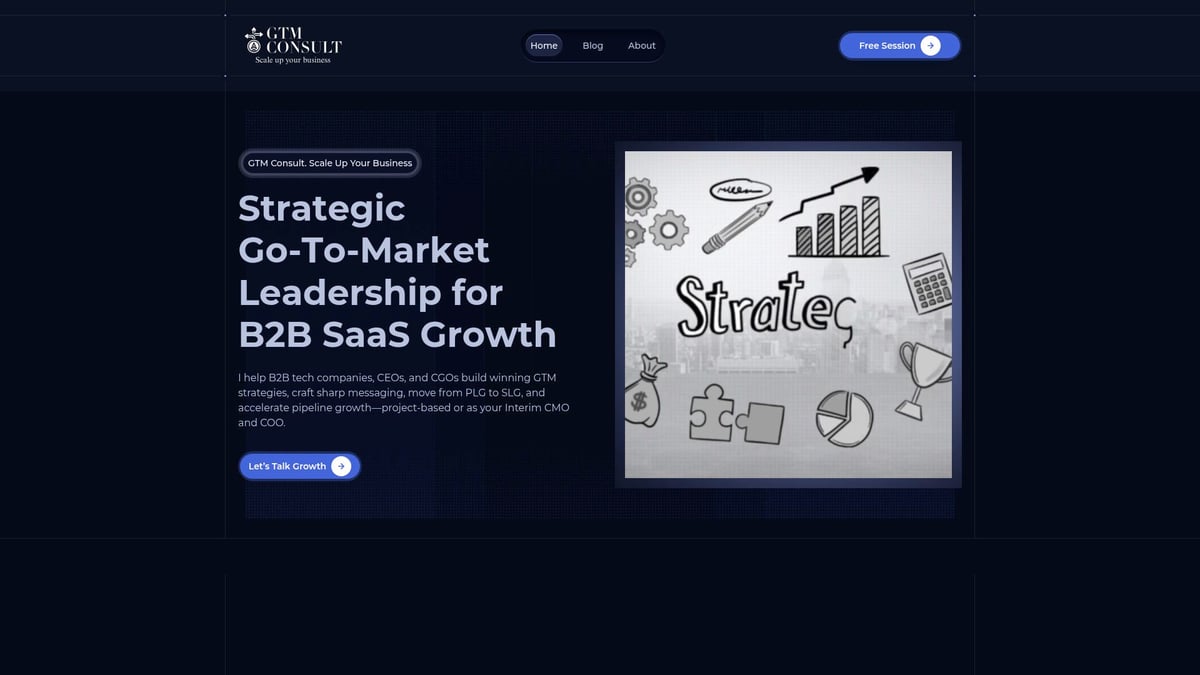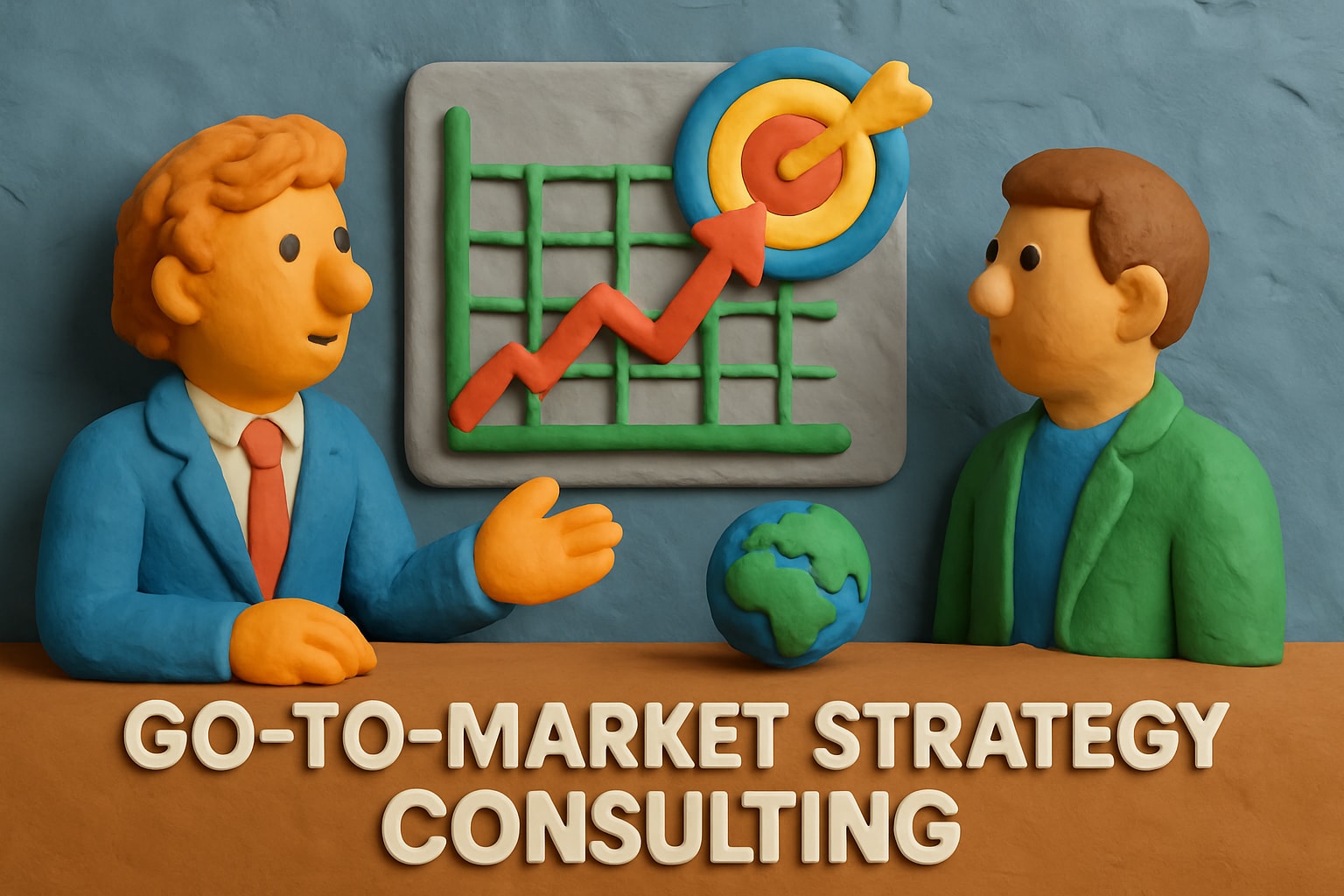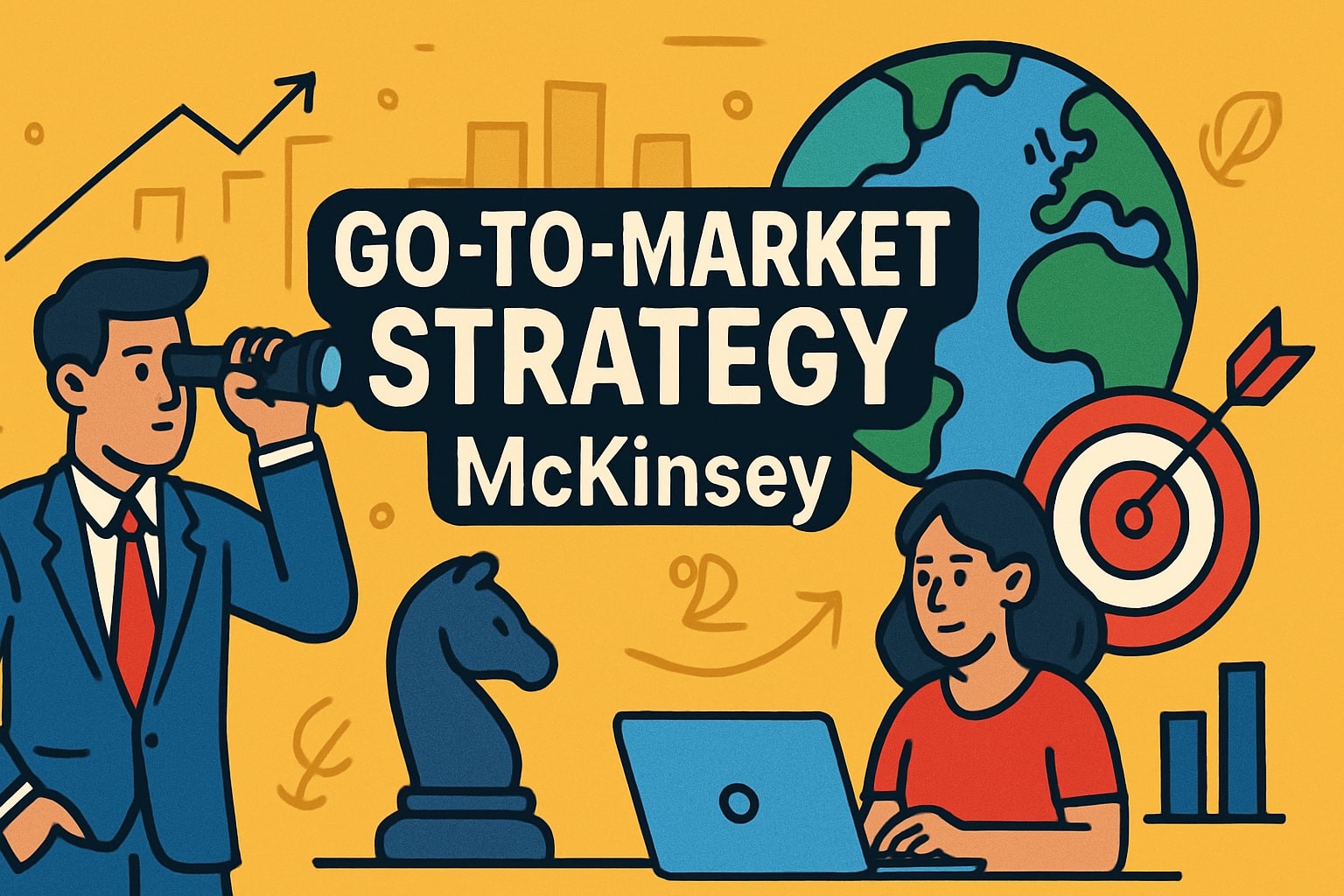Guide To Building A Winning Go To Market Strategy Slide 2025


In 2025, the difference between a breakout product and a missed opportunity often comes down to one thing: a well-crafted go to market strategy slide. According to McKinsey, four out of five launches fail without a robust GTM approach, making this slide a mission-critical element in every B2B SaaS and enterprise software pitch deck.
This article delivers a practical, step-by-step guide to building a go to market strategy slide that drives measurable pipeline and ARR growth. You will learn how to define your GTM strategy, align product, marketing, and sales, leverage AI and Agentic Automation, and follow best practices for slide creation.
Discover actionable frameworks, proven examples, and expert insights to help you craft a GTM slide that not only secures stakeholder buy-in but also fuels scalable revenue growth. Ready to stand out in a crowded market? Let’s get started.
Understanding the Go-To-Market Strategy Slide
A go to market strategy slide is the centerpiece of any B2B SaaS pitch deck or board presentation. It distills your launch plan into a single, focused visual that aligns teams and drives execution. Unlike a generic marketing plan, this slide is purpose-built for revenue impact and market entry, showing exactly how you will win and grow pipeline.
What makes a go to market strategy slide stand out? It includes clear, actionable elements:
Top competitor decks show that clarity, focus, and strong visual structure are non-negotiable. For example, Peloton’s retail-first GTM slide highlighted premium positioning and channel strategy, making their market approach instantly understandable.
A well-crafted slide can drive measurable results. In xtype.io’s case, 60 percent of new pipeline growth was attributed to a refined go to market strategy slide that guided cross-team action. Insights from GTM Slide Best Practices confirm the importance of visuals and specificity in winning stakeholder support.
Ultimately, the slide is not just for show. It is your blueprint for aligning leadership, securing investment, and setting the pace for GTM execution.

Aligning Product, Marketing, and Sales for Unified Growth
Modern B2B SaaS growth depends on true cross-functional alignment. When product, marketing, and sales teams work in silos, the potential of a go to market strategy slide is limited. Siloed teams often miss out on pipeline opportunities and struggle with inconsistent messaging.
The Importance of Cross-Functional Alignment
Unified teams are essential for effective go to market strategy slide execution. Leading SaaS companies are shifting from Product-Led Growth (PLG) to Sales-Led Growth (SLG) to drive predictable revenue. This transition demands frameworks that connect KPIs across all functions, creating transparency in pipeline forecasting and ARR impact.
A shared language and clear objectives foster collaboration. Operational dashboards bring real-time visibility to every team member. For example, Broadcom reported a 25% increase in win rates after integrating product, marketing, and sales into a single GTM function. Enablement playbooks support consistency and speed up onboarding.
If you want to explore the mechanics of SLG alignment, see this Sales-Led Growth in Enterprise SaaS guide for practical frameworks.
GTM Consult: Accelerating GTM Alignment for B2B SaaS
GTM Consult specializes in helping SaaS companies achieve unified growth through a robust go to market strategy slide. Their services span end-to-end GTM strategy, messaging, enablement playbooks, and operational setup.

Clients like Hadean have seen 300% more leads, xtype.io attributes 60% of pipeline growth to GTM Consult, and Broadcom achieved a 25% pipeline boost. GTM Consult offers project-based or interim executive support, tailoring solutions to your growth stage.
Their focus is always on measurable outcomes: pipeline acceleration, ARR expansion, and market positioning. Startups and scaleups can access a free strategy call to jumpstart GTM alignment and drive results.
Step-by-Step Guide: Building Your 2025 Go-To-Market Strategy Slide
A high-impact go to market strategy slide is not built in a vacuum. It demands clear structure, actionable insights, and alignment with your broader business goals. Here is a proven, step-by-step approach to help you create a slide that not only secures buy-in but drives measurable pipeline and ARR growth.

Step 1: Define Business Objectives and Market Context
Start by anchoring your go to market strategy slide in your company’s overarching vision. Clarify what success looks like in terms of revenue, market share, or product adoption. Assess available resources and set realistic targets. For example, Uber’s market expansion was meticulously mapped to its global vision, with each launch tied to specific KPIs. McKinsey data shows that 80 percent of failed product launches stem from misaligned GTM objectives. A crystal-clear objective sets the foundation for everything that follows.
Step 2: Segment and Prioritize Your Target Market
Use firmographic, technographic, and needs-based segmentation to identify your highest-potential B2B audiences. Visual tools like segmentation matrices make it easy to prioritize opportunities. For instance, airlines often segment leisure travelers by behavior and spend to tailor offers. To accelerate this process, leverage resources such as GTM Template Examples for SaaS, which provide ready-to-use frameworks for visualizing and refining your segmentation on your go to market strategy slide.
Step 3: Analyze Competition and Demand Signals
Conduct a thorough competitive analysis to map out both direct and indirect rivals. Evaluate market saturation, identify whitespace opportunities, and monitor demand trends using both internal data and external benchmarks. Hotel chains, for example, differentiate their offerings by targeting specific market segments, avoiding saturated spaces, and capturing underserved demand. Competitive insights help you refine your positioning and ensure your go to market strategy slide highlights unique opportunities.
Step 4: Craft a Differentiated Value Proposition
Articulate what makes your solution stand out for each prioritized segment. Use a value matrix to tailor your messaging by persona, focusing on outcomes and benefits. For example, a SaaS provider may win deals by emphasizing its rapid customer support over competitors. Ensure your value proposition on the go to market strategy slide is concise, clear, and resonates with your target audience. AI tools and Agentic Automation can help personalize messaging at scale, making your value proposition even more compelling.
Step 5: Map the Buyer Journey and Select Acquisition Channels
Visualize the entire customer journey, from initial awareness to final decision. Align your acquisition channels—such as SEO, partnerships, direct sales, or free trials—to each stage. Peloton’s use of retail stores for mid-funnel consideration is a classic example of matching channel to journey stage. Data from Bain shows that multi-channel GTM strategies can boost conversion rates by 30 percent. Illustrate these pathways clearly on your go to market strategy slide for maximum impact.
Step 6: Choose the Optimal Sales and Distribution Model
Select the sales model that best fits your product’s complexity and your buyers’ preferences, whether self-service, inside sales, field sales, or a hybrid approach. For instance, SaaS companies often deploy freemium models for SMBs and field sales for enterprise deals. The right model, reflected on your go to market strategy slide, ensures scalability and aligns sales efforts with customer expectations. Integrating AI-driven insights can further optimize sales motions and accelerate revenue growth.
Leveraging AI & Agentic Automation in Your GTM Strategy Slide
Agentic AI is rapidly transforming how SaaS and enterprise teams approach their go to market strategy slide. Unlike traditional automation, Agentic AI operates as an intelligent orchestrator, continuously adapting workflows across marketing, sales, and customer success to maximize revenue outcomes.
AI now powers advanced segmentation, dynamic lead scoring, and hyper-personalized outreach. For example, predictive models can flag high-value accounts and trigger tailored campaigns, while Agentic Automation syncs sales tasks and marketing follow-ups in real time. This unified approach not only accelerates pipeline velocity but also reduces customer acquisition costs.
Consider a B2B SaaS company leveraging AI-driven playbooks. Automated recommendations help sales teams prioritize the right opportunities, while marketing receives instant feedback on campaign performance. As a result, industry benchmarks show that AI-enabled GTM teams achieve sales cycles that are 40% faster.
When designing your go to market strategy slide, use icons or simple process flows to illustrate where AI and automation drive value. For a deeper dive into AI-driven GTM frameworks, see this AI in GTM Strategies guide.
In 2025, future-proofing your GTM means embedding adaptive, data-driven automation at every stage. This not only keeps your team ahead of the curve, but also ensures your GTM approach remains agile as markets evolve.

Best Practices for a Winning GTM Strategy Slide in 2025
Creating a standout go to market strategy slide is essential for driving pipeline growth and ARR in today’s SaaS landscape. To ensure your slide resonates with investors and internal teams, focus on clarity, measurable outcomes, and adaptability.
Best Practices Checklist:
For more actionable insights, see the Go-to-Market Strategy Consulting Guide for step-by-step frameworks and visual examples.
Common Mistakes and Solutions
MistakeSolutionGeneric messagingTailor value props by segmentMissing metricsAdd clear KPIs and targetsOverly complex visualsUse simple, intuitive graphicsNo audience adaptationCustomize content for each stakeholder
Final Slide Review Checklist:
A winning go to market strategy slide combines clarity, measurable outcomes, and adaptability. By following these best practices, you’ll position your SaaS or enterprise software company for sustainable growth in 2025.
If you’re ready to turn your GTM strategy slide into a true growth engine, now’s the perfect time to take action. We’ve explored how aligning product, marketing, and sales, leveraging AI, and focusing on clear, measurable outcomes can transform your go to market execution. But every business is different, and sometimes you need an expert perspective to unlock those next-level results. If you want personalized guidance or want to see how a proven framework could accelerate your pipeline and ARR, let’s connect. You can Book a free meeting and start building your winning GTM strategy for 2025.

Latest From
The Blog
Go To Market Strategy Consulting Guide For 2025 Success

Go To Market Strategy McKinsey Guide For Success 2025

Crossing the Enterprise Chasm: A Practical Guide to Sales-Led Growth (SLG)


Let's Build The Future Together







.jpg)